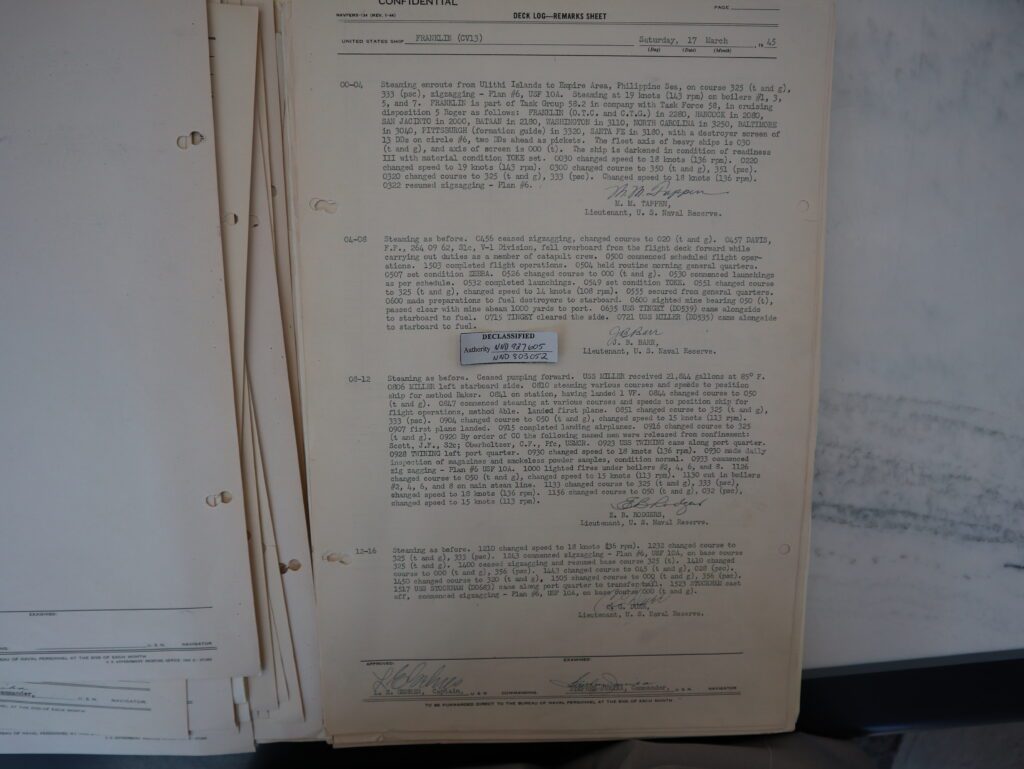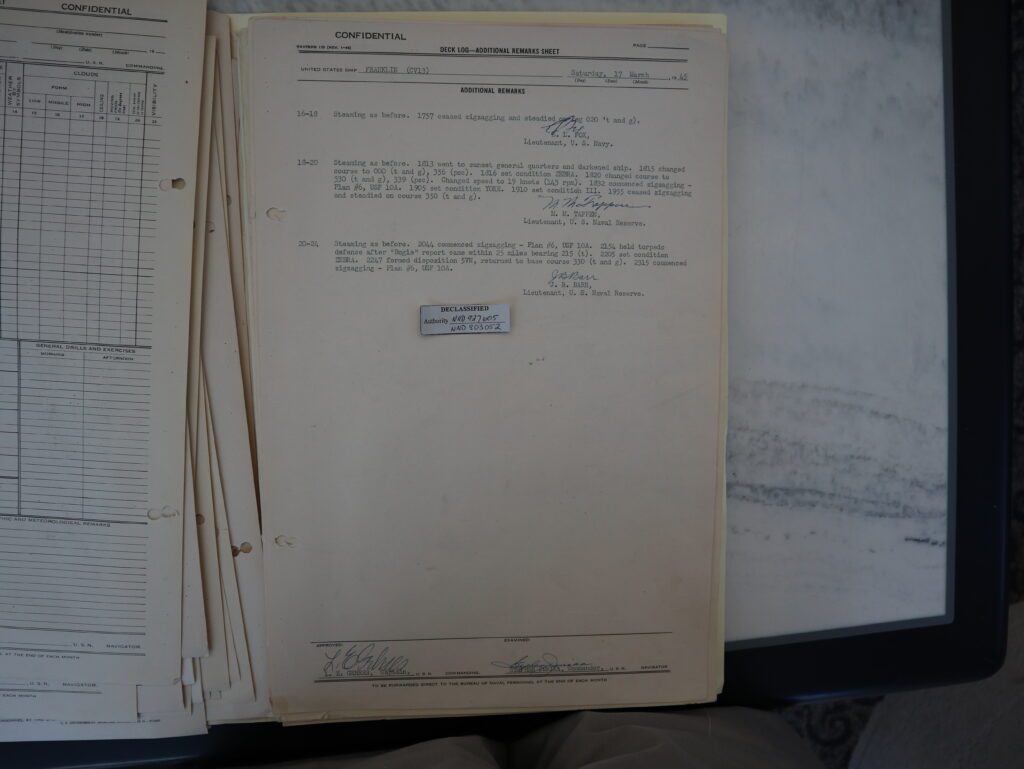USS FRANKLIN Deck Log 17 March 1945-Calm Before The Storm
This is the fourth in a series of posts featuring the deck logs of USS Franklin (CV-13). Franklin was the flagship of Task Group 58.2, one of four groups making up Task Force 58. The mission of the task force was to destroy as many Japanese naval and air assets so that they could not be used against Allied forces in the upcoming invasion of Okinawa.

Deck Log 000-1200
The first entry covered the time from midnight to 0400. Lieutenant M. M. Tappen, USNR listed the course, speed, ships in the task group, material readiness condition, and the changes in course and speed.
Lieutenant J. B. Barr, USNR made the entry covering 0400 to 0800. In addition to listing course changes, he states that flight operations began (launching Combat Air and Anti-Submarine Patrols). After those planes were launched, destroyers USS Tingey and USS Miller came alongside to refuel. Of note, Tingey was the second destroyer to carry that name. The captain of USS Franklin, Leslie Gehres, had commanded the first Tingey during the pre-war years.
Lieutenant E. B. Rodgers, USNR, authored the 0800-1200 entry. The morning air patrols returned and were recovered. Two men were released from confinement. The daily inspections of magazines and powder were completed and conditions were found normal. Zigzagging commenced at 0933.
Deck Log 1200-2400
At 1200, Lieutenant C. G. Durr, USNR, recorded the ship steaming as before and various course changes were made. USS Stockham (DD683) came alongside and transferred mail.

Lieutenant E. L. Fox, USN, reported that from 1600-1800 the ship was “steaming as before.”
Lieutenant M. M. Tappen, USNR, wrote that at 1816 the ship went to evening general quarters and set Condition Zebra, which meant that all watertight hatches and doors were closed. The ship zigzagged from 1832 to 1955.
The ship’s day ended at 2400 with Lieutenant J. B. Barr, USNR reporting that the ship commenced zigzagging at 2044. At 2154 a “bogie” (unidentified aircraft)was reported within 25 miles. At 2205 condition ZEBRA was again set. The task group formed disposition 5VN and ended the night zigzagging.
Things were beginning to heat up. The bogie was most likely a Japanese reconnaissance aircraft. Within a few hours, the first attacks would occur on Task Force 58, although not on Franklin’s task group.1
Did you arrive here via a search engine? I am the author of the forthcoming book, Heroes By The Hundreds: The Story of the USS Franklin (CV-13). In addition to writing about the bravery of the crews that saved her, I will write about the lessons we can learn in leadership and decision-making. I’ll also write about the changes the US Navy made because of those lessons learned.
Feel free to follow me on Facebook. There, I am M. Glenn Ross, Author. I also write a monthly newsletter, Glenn’s After-Action Report, about subjects I find interesting in my research. You can sign up for it below. Feel free to leave a comment or ask a question. Thanks for reading.
-Glenn